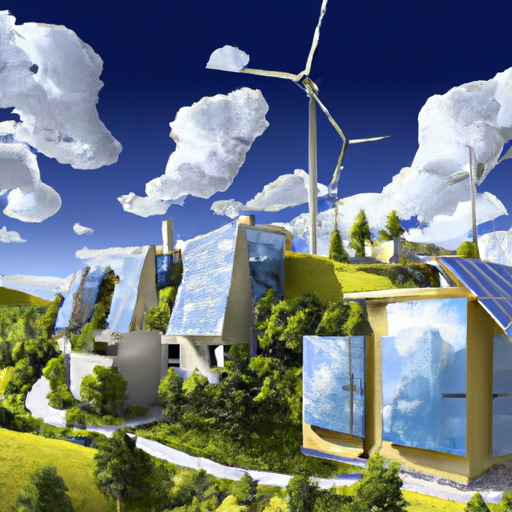In this article, you will discover some answers to the question, “How do self-sustaining buildings manage energy consumption?” Explore the innovative technologies and strategies employed by these buildings to maximize energy efficiency and reduce their environmental impact. Gain insight into the various renewable energy sources utilized, such as solar panels and geothermal systems, and how they enable these buildings to generate their own power. Learn how smart building automation systems play a crucial role in efficiently managing and optimizing energy usage. From innovative design features to intelligent energy management, self-sustaining buildings are revolutionizing the way we think about energy consumption.
Passive Design
Optimal Building Orientation
Self-sustaining buildings make use of passive design techniques to efficiently manage their energy consumption. One such technique is to carefully consider the orientation of the building. By positioning the building in a way that maximizes the use of natural sunlight and minimizes exposure to harsh elements, the need for artificial lighting and heating/cooling systems can be significantly reduced. The strategic placement of windows, shading devices, and insulation can all contribute to achieving an optimal building orientation.
Thermal Insulation
Thermal insulation plays a crucial role in reducing energy needs in self-sustaining buildings. By effectively insulating the walls, roof, and floors, these buildings can minimize heat loss during the colder months and heat gain during the hotter months. This helps to maintain a comfortable indoor temperature without relying heavily on heating or cooling systems. Additionally, proper insulation also improves soundproofing, ensuring a peaceful and quiet environment for occupants.
High-performance Windows
High-performance windows are another important feature in self-sustaining buildings. These windows are designed to minimize heat transfer, making them highly efficient in conserving energy. They are usually made of multiple panes of glass with an insulating gas in between, which acts as a barrier to heat transfer. Additionally, low-emissivity coatings can be applied to the glass surface to further reduce heat transfer. High-performance windows not only contribute to energy savings but also enhance the overall comfort and aesthetics of the building.
Natural Ventilation
Natural ventilation is a key aspect of self-sustaining buildings, as it allows for the circulation of fresh air without the need for mechanical ventilation systems. By incorporating elements such as operable windows, vents, and skylights, these buildings can take advantage of natural airflow to cool and refresh indoor spaces. The strategic placement of these openings, along with consideration for prevailing wind patterns, ensures effective natural ventilation throughout the building. This not only reduces energy consumption but also improves indoor air quality.
Daylighting
Daylighting, the practice of maximizing natural light in buildings, is an essential component of self-sustaining design. By incorporating ample windows, light shelves, and reflective surfaces, these buildings can minimize the need for artificial lighting during daylight hours. Not only does this reduce energy usage, but it also enhances the overall visual comfort and well-being of occupants. Daylighting has been shown to improve productivity, mood, and even sleep patterns, making it a vital consideration in self-sustaining building design.
Renewable Energy Sources
Solar Power
Harnessing the power of the sun, solar energy is a widely utilized renewable energy source in self-sustaining buildings. Photovoltaic (PV) panels are installed on the roof or other suitable areas to convert sunlight into electricity. This electricity can then be used to power various appliances and systems within the building. In addition to reducing dependence on non-renewable energy sources, solar power also helps to lower carbon emissions and mitigate the impacts of climate change.
Wind Power
Another renewable energy source commonly employed in self-sustaining buildings is wind power. By placing wind turbines strategically and taking advantage of wind patterns, these buildings can generate electricity from the kinetic energy of the wind. This electricity can be used for various purposes, such as lighting, heating, ventilation, and air conditioning. Wind power is a clean and abundant source of energy that can significantly contribute to the sustainable operation of buildings.
Geothermal Energy
Geothermal energy taps into the natural heat stored within the Earth’s crust to provide heating and cooling for self-sustaining buildings. Utilizing geothermal heat pumps, these buildings can extract heat from the ground during the winter months and release heat back into the ground during the summer months. This geothermal exchange provides a highly efficient and reliable source of energy, helping to reduce reliance on fossil fuels and minimize greenhouse gas emissions.
Hydroelectric Power
In certain locations with access to flowing water sources, hydroelectric power can be integrated into self-sustaining buildings’ energy systems. Small-scale turbines or micro-hydropower systems can be installed to generate electricity from the kinetic energy of the moving water. By utilizing water as a renewable energy source, these buildings can reduce their carbon footprint and contribute to the preservation of natural ecosystems.
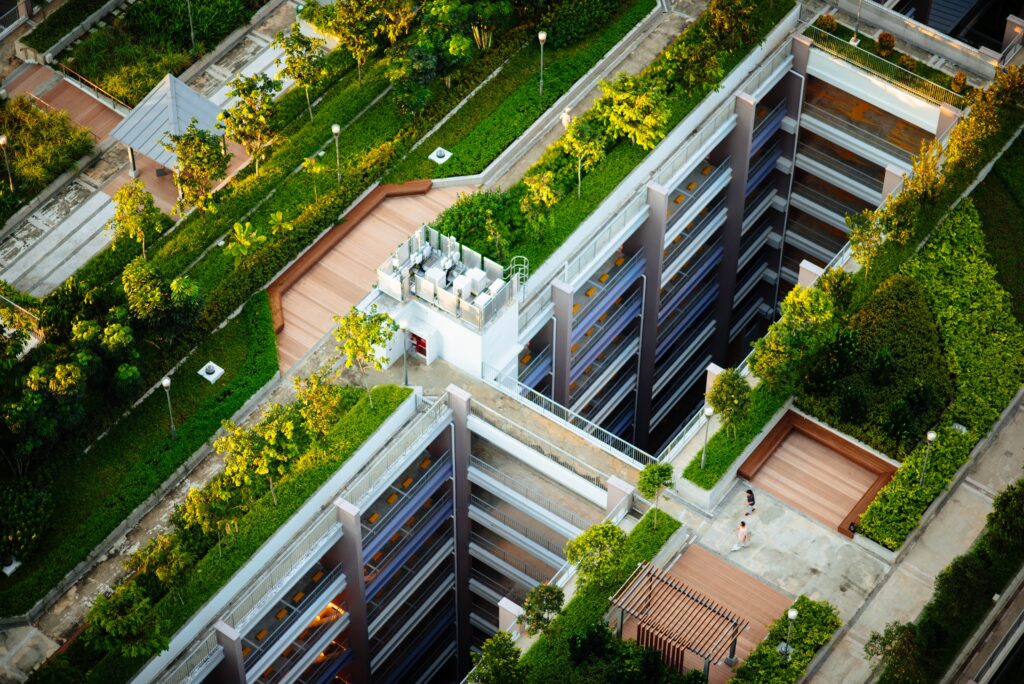
Check Out Our Top Eco Friendly Product Picks On Amazon Here
Energy Efficiency Technologies
LED Lighting
LED lighting technology is a game-changer when it comes to energy efficiency in self-sustaining buildings. LED bulbs consume significantly less energy compared to traditional incandescent or fluorescent lights, while producing the same or even higher levels of brightness. By replacing outdated lighting systems with energy-efficient LEDs, these buildings can drastically reduce their energy consumption and lower electricity bills. LED lights also have a longer lifespan, which means fewer replacements and less waste.
Energy Management Systems
Energy management systems help self-sustaining buildings optimize their energy consumption by monitoring, controlling, and adjusting various energy-consuming systems and devices. These systems utilize advanced sensors, meters, and software to collect data on energy usage and analyze it in real-time. By identifying inefficiencies and implementing energy-saving strategies, buildings can achieve significant energy savings without sacrificing comfort or functionality. Energy management systems also allow for remote monitoring and control, facilitating efficient operation and maintenance.
Smart Meters
Smart meters are an integral part of energy efficiency in self-sustaining buildings. These meters provide real-time information on energy usage, allowing occupants and building managers to track and manage their consumption effectively. By promoting awareness and accountability, smart meters encourage energy-saving behaviors and help identify areas where efficiency can be improved. Additionally, smart meters enable time-of-use pricing, incentivizing occupants to shift their energy usage to off-peak hours when electricity is generally cheaper and more abundant.
Heat Recovery Ventilation
Heat recovery ventilation systems are designed to provide fresh air to self-sustaining buildings while minimizing heat loss or gain. These systems utilize heat exchangers to transfer heat from outgoing stale air to incoming fresh air, pre-conditioning the ventilation air and reducing the load on heating or cooling systems. Heat recovery ventilation not only reduces energy consumption but also improves indoor air quality by ensuring a constant supply of fresh air.
High-efficiency HVAC Systems
Self-sustaining buildings often rely on high-efficiency heating, ventilation, and air conditioning (HVAC) systems to optimize energy consumption. These systems use advanced technologies, such as variable speed drives, high-efficiency coils, and intelligent controls, to deliver precise heating and cooling at minimal energy cost. High-efficiency HVAC systems also incorporate features like zoned temperature control and occupancy-based scheduling, ensuring that energy is only used where and when it is needed.
Energy Storage and Distribution
Battery Storage
Battery storage systems are essential for self-sustaining buildings seeking to optimize their energy usage and maintain a constant power supply. These systems store excess electricity generated from renewable sources, such as solar panels or wind turbines, and release it when demand exceeds production. By utilizing battery storage, buildings can reduce their reliance on the grid during peak hours or when renewable energy generation is low. Battery storage not only increases energy independence but also enhances resilience against power outages.
Fuel Cells
Fuel cells provide a clean and efficient form of energy generation for self-sustaining buildings. These cells convert hydrogen or hydrogen-rich fuels into electricity through a chemical process, producing only water and heat as byproducts. Fuel cells are highly versatile and can be used for both stationary and portable power applications. In self-sustaining buildings, fuel cells can supplement renewable energy sources and provide reliable electricity, particularly during periods of low renewable energy production.
District Heating and Cooling
District heating and cooling systems are centralized energy distribution networks that supply thermal energy to multiple buildings in a specific area. These systems utilize a combination of renewable and conventional energy sources to generate hot or cold water, which is then circulated through a network of pipes to individual buildings. By sharing the energy load across multiple buildings, district heating and cooling systems optimize energy consumption and reduce the overall carbon footprint of self-sustaining communities.
Microgrids
Microgrids are localized electricity generation and distribution systems that serve specific areas or communities. These self-contained grids can operate independently from the main power grid or function in parallel with it, depending on the circumstances. Microgrids typically incorporate a mix of renewable energy sources, energy storage systems, and energy management technologies to ensure reliable and sustainable power supply to self-sustaining buildings. In addition to enhancing energy security and resilience, microgrids can also facilitate the integration of electric vehicles and other emerging energy technologies.
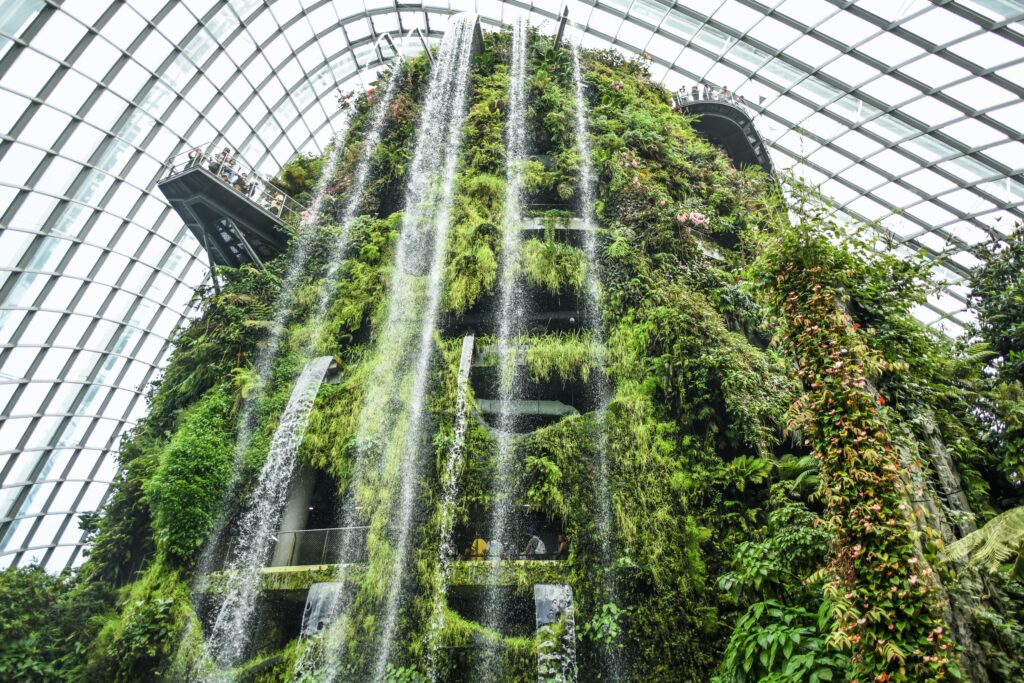
Building Automation and Controls
Intelligent Building Management Systems
Intelligent building management systems are at the forefront of self-sustaining building technology. These centralized systems integrate various building systems, such as lighting, HVAC, security, and energy management, into a single platform. By collecting and analyzing data from sensors and devices throughout the building, intelligent building management systems can optimize energy consumption, automate processes, and enhance occupant comfort. These systems also enable remote monitoring and control, allowing for efficient operation and preventive maintenance.
Occupancy Sensors
Occupancy sensors are an important component of energy-efficient self-sustaining buildings. These sensors detect the presence or absence of occupants in a space and adjust lighting, heating, or cooling accordingly. By automatically turning off lights or adjusting temperature settings when rooms are unoccupied, occupancy sensors help reduce unnecessary energy consumption. These sensors can be installed in individual rooms or throughout the building, allowing for precise control and energy savings.
Automated Lighting and HVAC Controls
Automation plays a key role in energy management in self-sustaining buildings. Automated lighting and HVAC controls utilize timers, sensors, and programmable algorithms to regulate energy-consuming systems based on occupancy, time of day, or other environmental conditions. By automating the operation of these systems, buildings can ensure that energy is used efficiently and only when needed. For example, lights can be programmed to turn off automatically when a room is vacant, and HVAC systems can adjust temperature settings based on occupancy patterns.
Real-time Monitoring and Optimization
Real-time monitoring and optimization are essential for effective energy management in self-sustaining buildings. By continuously monitoring energy usage, occupant behavior, environmental conditions, and system performance, buildings can identify inefficiencies and implement immediate changes to optimize energy consumption. Advanced analytics and machine learning algorithms can further enhance the decision-making process by analyzing vast amounts of data and providing insights for continuous improvement. Real-time monitoring and optimization enable buildings to adapt to changing conditions and maintain optimal energy efficiency.
Water Management
Rainwater Harvesting
Rainwater harvesting is a sustainable water management practice that collects rainwater for various uses within self-sustaining buildings. Rooftop catchment systems, collection tanks, and filtration systems are utilized to capture and store rainwater, which can then be used for irrigation, toilet flushing, laundry, or other non-potable purposes. By reducing reliance on potable water sources, rainwater harvesting conserves water and reduces the strain on municipal water supplies.
Greywater Recycling
Greywater recycling is the process of treating and reusing wastewater generated from non-toilet sources, such as showers, sinks, and washing machines. Greywater is collected, filtered, and treated to remove impurities and contaminants before being used for non-potable purposes within self-sustaining buildings. This practice not only conserves water but also reduces the burden on sewage systems and minimizes environmental pollution. Greywater recycling can significantly contribute to overall water efficiency in self-sustaining building design.
Water-Efficient Fixtures
Water-efficient fixtures, such as low-flow toilets, faucets, and showerheads, are essential components of water management in self-sustaining buildings. These fixtures are designed to minimize water consumption without compromising performance or user experience. By employing innovative technologies, such as aerators and pressure regulators, water-efficient fixtures can deliver the desired functionality while significantly reducing water usage. Installing these fixtures throughout the building can lead to substantial water savings and lower utility bills.
Water Conservation Strategies
Water conservation strategies encompass a wide range of practices aimed at reducing water consumption in self-sustaining buildings. These strategies may include water-wise landscaping, which utilizes drought-resistant plants and efficient irrigation systems. Additionally, leak detection and repair programs help identify and fix plumbing leaks promptly, preventing water waste. Educational campaigns and awareness programs can also promote responsible water usage among building occupants, fostering a culture of water conservation.
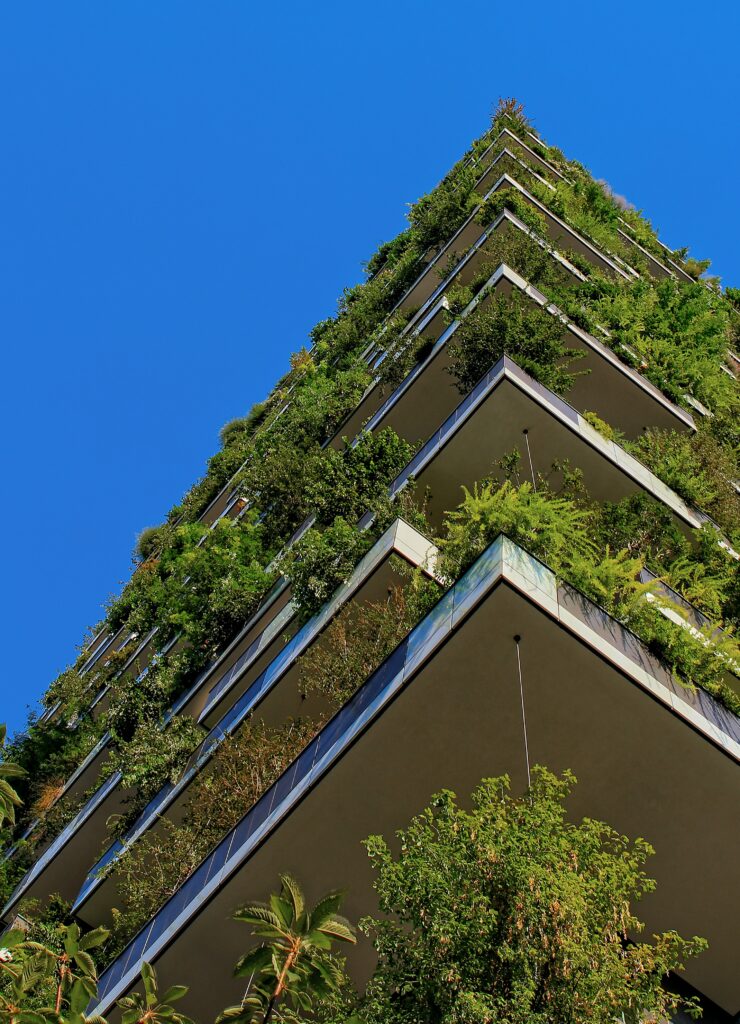
Waste Management
Recycling and Composting Programs
Waste management is a critical aspect of self-sustaining building operations. Recycling and composting programs are implemented to divert waste from landfills and promote resource recovery. These programs involve the separation and collection of recyclable materials, such as paper, plastics, glass, and metals, as well as the composting of organic waste. Through these initiatives, self-sustaining buildings can minimize their environmental impact and contribute to the circular economy by reducing waste generation and conserving valuable resources.
Waste-to-Energy Systems
Waste-to-energy systems offer a sustainable solution for managing waste in self-sustaining buildings. These systems convert non-recyclable waste into energy through various processes, such as incineration or anaerobic digestion. The energy generated can be used to power buildings or supplement other clean energy sources. Waste-to-energy systems help reduce the volume of waste sent to landfills while simultaneously providing a renewable energy source, promoting a circular economy and mitigating environmental pollution.
Efficient Waste Sorting and Disposal
Efficient waste sorting and disposal practices are vital in self-sustaining buildings to ensure proper waste management. By implementing clearly labeled bins for different types of waste and providing educational materials, buildings can facilitate the correct sorting and disposal of waste. Additionally, partnering with waste management companies that prioritize recycling and resource recovery can enhance the effectiveness of waste management efforts. Proper waste sorting and disposal enable self-sustaining buildings to maximize recycling and minimize landfill waste.
Circular Economy Principles
Self-sustaining buildings embrace circular economy principles in their waste management strategies. By adopting the principles of reduce, reuse, and recycle, these buildings aim to minimize waste generation and maximize resource efficiency. This includes implementing recycling programs, embracing sustainable procurement practices, promoting product lifecycle management, and encouraging the reuse of materials and products whenever possible. By shifting towards a circular economy model, self-sustaining buildings contribute to a more sustainable and resilient future.
Occupant Behavior
Energy Awareness and Education
Energy awareness and education programs play a crucial role in promoting energy conservation and responsible behavior among occupants of self-sustaining buildings. By raising awareness about the importance of energy efficiency and providing information on energy-saving practices, occupants can make informed decisions about their energy usage. Education programs can also highlight the benefits of sustainable living and empower occupants to take an active role in reducing their energy consumption.
Behavioral Change Programs
Behavioral change programs are designed to encourage occupants of self-sustaining buildings to adopt energy-saving behaviors. These programs utilize various strategies, such as incentives, competitions, and social norms, to motivate individuals to change their habits. For example, residents can be rewarded for reducing their energy consumption or participating in energy-saving initiatives. By fostering a sense of community and collective responsibility, behavioral change programs can effectively drive sustainable behavior and reduce overall energy consumption.
Smart Appliances and Energy Monitoring
Smart appliances and energy monitoring devices provide occupants of self-sustaining buildings with real-time information on their energy usage. Smart appliances, such as energy-efficient refrigerators or washing machines, optimize energy consumption based on occupancy and load requirements. Energy monitoring devices, on the other hand, provide detailed insights into energy usage patterns and allow occupants to identify areas for improvement. By utilizing these technologies, occupants can make informed decisions about their energy consumption and adjust their behavior accordingly.
Incentives and Rewards
Incentives and rewards can be powerful motivators for occupants of self-sustaining buildings to adopt energy-saving behaviors. Building owners can offer incentives, such as reduced rent or utility bills, to occupants who demonstrate a commitment to energy conservation. Rewards programs can also be implemented, where occupants earn points or benefits for achieving specific energy-saving goals. By providing tangible rewards, self-sustaining buildings can foster a culture of energy conservation and encourage sustained behavior change.
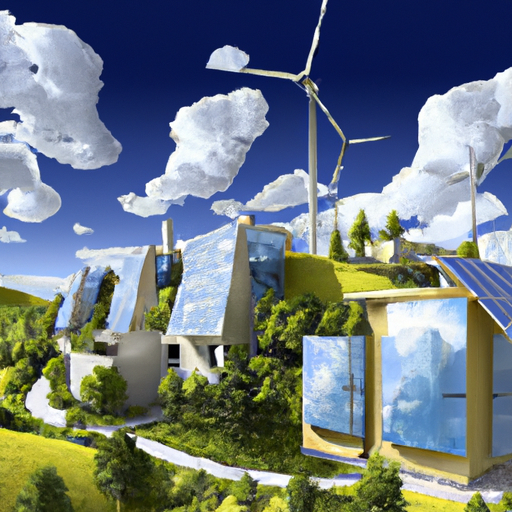
Life Cycle Assessment
Embodied Energy
Embodied energy refers to the total energy consumed throughout the life cycle of a building, including the extraction, processing, manufacturing, transportation, and disposal of materials. Self-sustaining buildings consider embodied energy in their design and construction process to minimize the environmental impact associated with material production. By selecting low-impact materials, utilizing recycled or locally sourced materials, and adopting efficient construction methods, these buildings can reduce their embodied energy and promote sustainability.
Carbon Footprint Analysis
Carbon footprint analysis assesses the total greenhouse gas emissions associated with the construction, operation, and end-of-life phases of a building. Self-sustaining buildings prioritize carbon footprint reduction by employing sustainable design strategies and utilizing renewable energy sources. By minimizing energy consumption and utilizing low-carbon technologies, these buildings can significantly reduce their carbon footprint and contribute to global efforts to mitigate climate change.
End-of-Life Recycling
End-of-life recycling is a critical consideration in self-sustaining building design. By incorporating materials that are recyclable or can be easily disassembled and repurposed, these buildings promote a circular economy and minimize waste generation. End-of-life recycling processes involve the careful separation and collection of materials from decommissioned buildings to ensure that valuable resources can be recovered and redirected towards new construction projects. Proper end-of-life recycling procedures contribute to the overall sustainability of self-sustaining buildings.
Material Selection
Material selection is a key factor in achieving sustainability in self-sustaining buildings. By choosing materials with a low environmental impact and a long lifespan, buildings can reduce their energy consumption, carbon footprint, and overall environmental footprint. Sustainable material options include recycled or upcycled materials, low-emission products, and renewable materials sourced from responsibly managed forests. Consideration is also given to the durability, maintenance requirements, and recyclability of materials to ensure a sustainable life cycle for the building.
Building Codes and Standards
Energy Conservation Codes
Energy conservation codes establish minimum requirements for energy efficiency in buildings. These codes outline standards for various aspects of building design and operation, including insulation, lighting, heating, cooling, and ventilation systems. Self-sustaining buildings adhere to these codes to ensure that they meet or exceed the mandatory energy efficiency requirements. Compliance with energy conservation codes not only enhances the sustainability of buildings but also promotes occupant comfort and reduces energy costs.
Green Building Certifications
Green building certifications, such as LEED (Leadership in Energy and Environmental Design) or BREEAM (Building Research Establishment Environmental Assessment Method), provide a recognized framework for assessing and certifying the sustainability performance of buildings. Self-sustaining buildings often pursue these certifications to demonstrate their commitment to environmental responsibility and meet industry-recognized standards. Green building certifications consider a wide range of criteria, including energy efficiency, water management, waste reduction, and indoor environmental quality.
Energy Star Ratings
Energy Star ratings provide a benchmark for energy efficiency in buildings, appliances, and equipment. Self-sustaining buildings strive for Energy Star certification to showcase their superior energy performance and demonstrate their commitment to sustainability. Energy Star ratings are based on rigorous testing and analysis, ensuring that certified products and buildings meet strict energy efficiency criteria. By choosing Energy Star-rated products and materials, self-sustaining buildings can achieve significant energy savings and reduce their environmental impact.
LEED (Leadership in Energy and Environmental Design)
LEED (Leadership in Energy and Environmental Design) is a globally recognized green building certification system developed by the U.S. Green Building Council (USGBC). Self-sustaining buildings often pursue LEED certification to demonstrate their commitment to sustainability and environmental responsibility. LEED certification considers various aspects of building design, construction, operation, and maintenance, including energy efficiency, water conservation, indoor environmental quality, and sustainable site development. LEED-certified buildings adhere to industry-leading standards and contribute to a more sustainable built environment.

